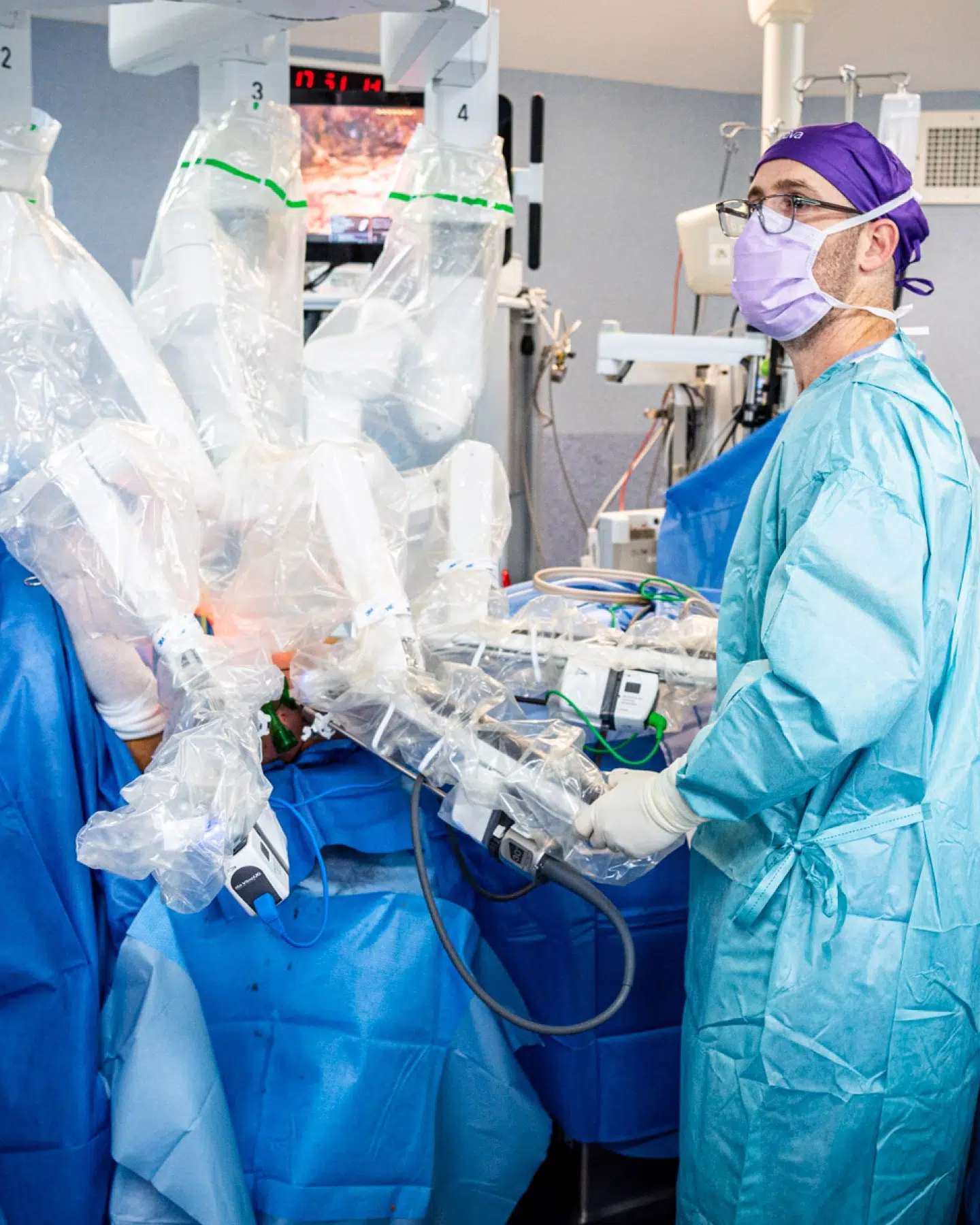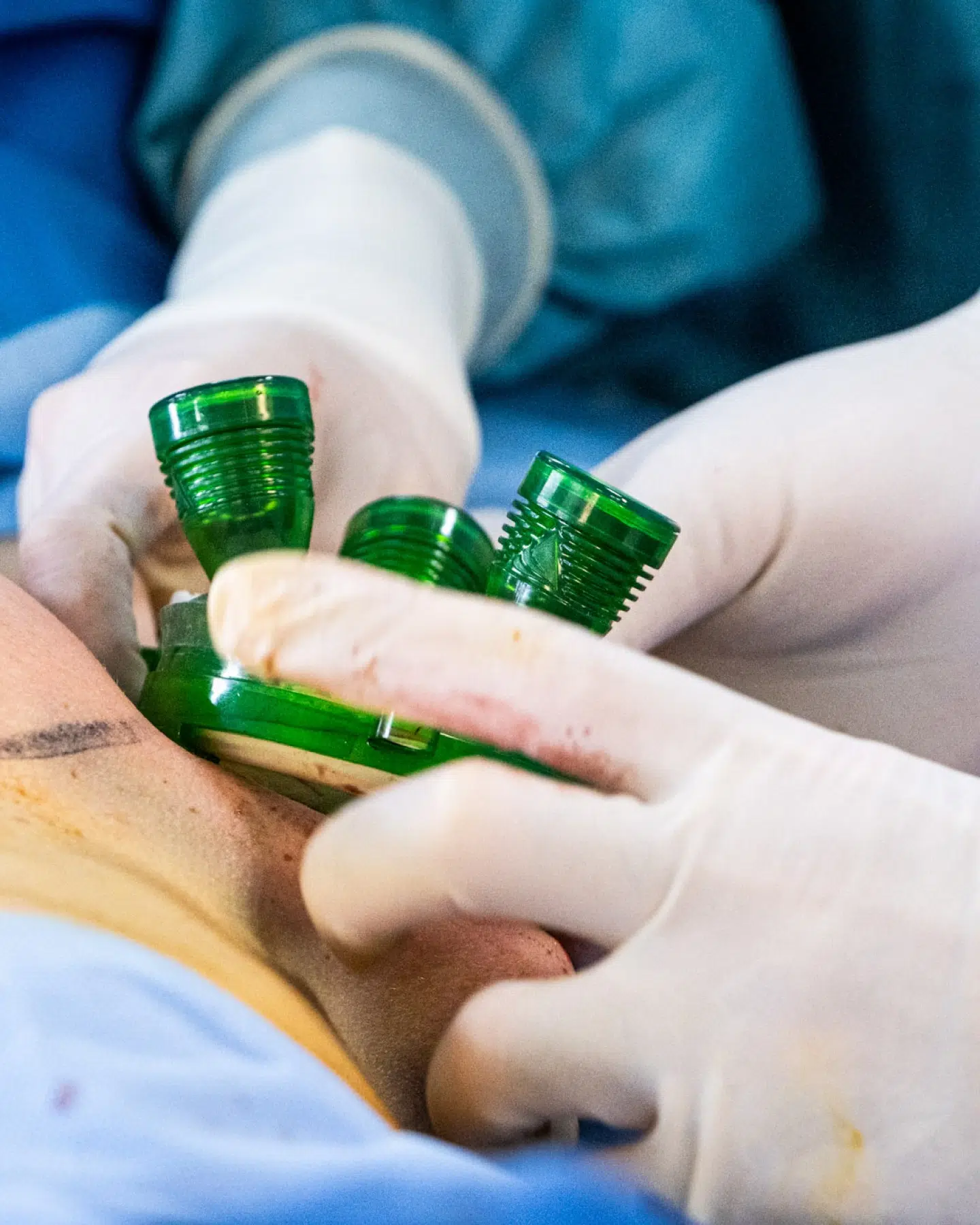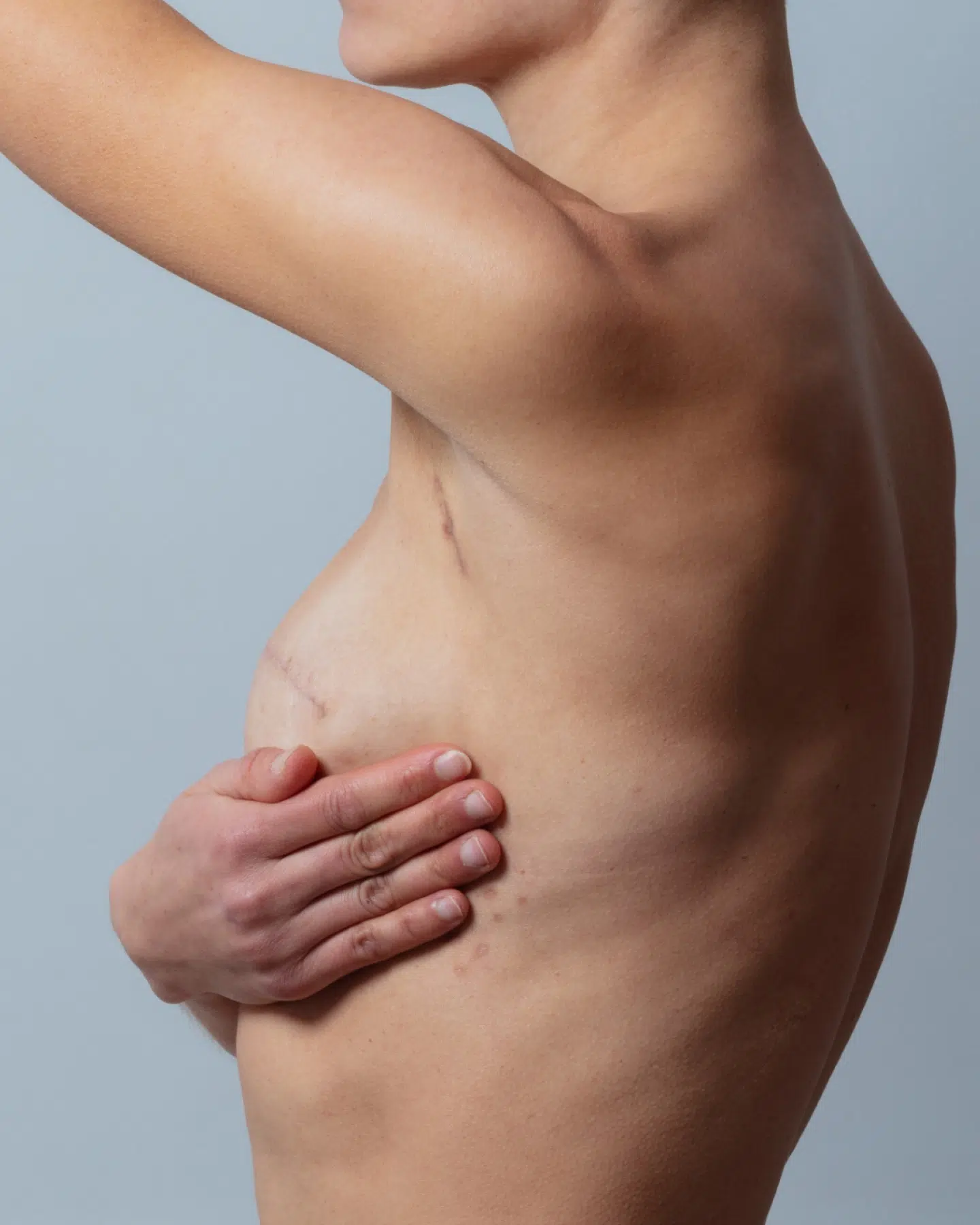Several surgical techniques can be considered for prophylactic mastectomy. The choice depends on the patient’s body type, desire for reconstruction, and the technologies available at the surgical center.
Robotic Surgery
Robot-assisted breast surgery is a major advancement in modern medicine. Using state-of-the-art technology, it enables highly precise procedures, minimizing scars and optimizing aesthetic outcomes.
It is used in breast reconstruction, lumpectomy, and prophylactic surgery in high-risk patients.
The surgeon operates remotely via a console, benefiting from 3D high-definition vision, which improves oncologic accuracy, reduces complications, and accelerates recovery.
Endoscopic Surgery
Endoscopic breast surgery is a minimally invasive alternative to traditional techniques. It is used for various procedures, including augmentation, post-cancer reconstruction, and some prophylactic mastectomies.
A camera inserted through a small incision provides a clear view of internal tissues, allowing for precise dissection and preservation of surrounding structures.
This technique reduces visible scarring, post-operative pain, and shortens recovery time.
In mastectomy, it enables precise removal of breast tissue and facilitates immediate reconstruction with implants or autologous tissue.
Pre-Pectoral breast reconstruction
After mastectomy, breast reconstruction may be performed immediately or later. The pre-pectoral technique involves placing the implant above the pectoral muscle, rather than underneath.
This avoids muscle dissection, reduces pain, and achieves a more natural appearance. With the use of biological matrices, this technique offers better tolerance and enhanced aesthetic results.
When possible, this method can be combined with nipple-sparing mastectomy, further improving the final cosmetic outcome.



